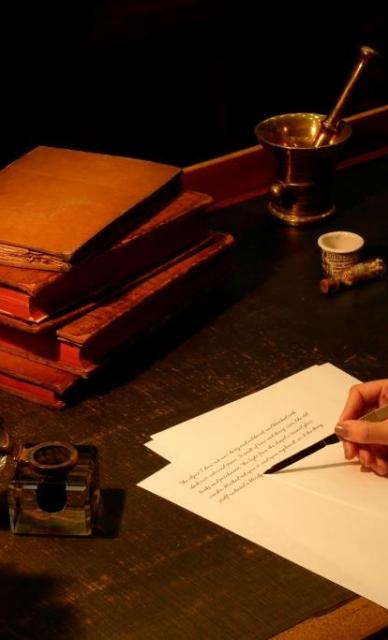Physicians' Gallery Newsletter
Updates on upcoming events, exhibitions and online stories
There was a huge interest in botany in the 1600s and 1700s. The fashion for collecting, documenting and categorising botanical and natural objects became increasingly widespread. The expansion of global trading networks also led many European medical practitioners to join the crews of trading ships in order to collect and document natural specimens and plants from different areas of the globe. This period also saw an increase in botanical gardens being cultivated across Europe and elsewhere.
The desire of the leading physicians in Edinburgh to establish a physic garden around 1670 was an important contributing factor to the foundation of the Royal College of Physicians of Edinburgh in 1681. At this time the study of botany and anatomy were considered the two core subjects in medicine. As the already established College of Surgeons dealt with anatomy it was in the physician’s interest to develop the area of botany.
Mungo Park (1771-1805) was a botanist and traveller born in Foulshiels near Selkirk. He studied medicine at the University of Edinburgh where he developed an interest in botany. He went on a botanical tour of the highlands with the botanist James Dickson, who later introduced Park to Sir Joseph Banks. In 1792 Park travelled to Sumatra as a surgeon’s mate in the service of the East India Company. Here he documented his observations on the plants and fishes of Sumatra and collected botanical samples for Banks.

William Roxburgh (1751-1815) was a botanist born in Ayrshire. He studied botany under Professor John Hope (1725-1786) at the University of Edinburgh. In 1766 with assistance from Hope, Roxburgh was appointment surgeon's mate on one of the East India Company's ships. In 1790 he gained the official post of naturalist in the Madras presidency. Three years later due to the death of the founder and manager of the Royal Botanic Garden in Calcutta, Colonel Robert Kyd, Roxburgh obtained the post as superintendent. Under Roxburgh’s management the collections grew from around 300 species in 1794 to around 3500 in 1813. Roxburgh was elected a Fellow of the Linnaean Society in 1799.

Daniel Rutherford (1749-1819) was a physician and chemist born in Edinburgh. He studied at the University of Edinburgh under William Cullen and Joseph Black. He obtained his MD in 1772 and in 1776 received his licence from the Royal College of Physicians. He became a Fellow of the College one year later and was elected President between 1796 and 1798. In 1786 Rutherford had succeeded John Hope as Professor of botany at the University of Edinburgh and Keeper of the Royal Botanic Garden at Edinburgh.

Sir James Edward Smith (1759-1828) was a botanist born in Norwich. He studied medicine at Edinburgh University between 1781 and 1783 under Dr John Hope, one of the earliest teachers of the Linnaean system. He then travelled to London with an introduction from Hope to Sir Joseph Banks, who was president of the Royal Society at that time.
Upon Linnaeus’s death Smith bought his library, manuscripts, herbarium, and natural history collections. Smith proposed the idea to replace the natural history society of which he was a member, with one bearing the name of Linnaeus. Subsequently, the first meeting of the Linnaean Society was held in London in 1788 and Smith was elected as its President.
The image below Smith’s portrait refers to an invented story regarding the transportation of the Linnaean collections to Britain. Upon hearing of the collection’s dispatch from Sweden, King Gustav III of Sweden was reported to have sent a vessel to intercept the ship that carried the documents, although his attempts were unsuccessful.


Physicians' Gallery Newsletter
Updates on upcoming events, exhibitions and online stories